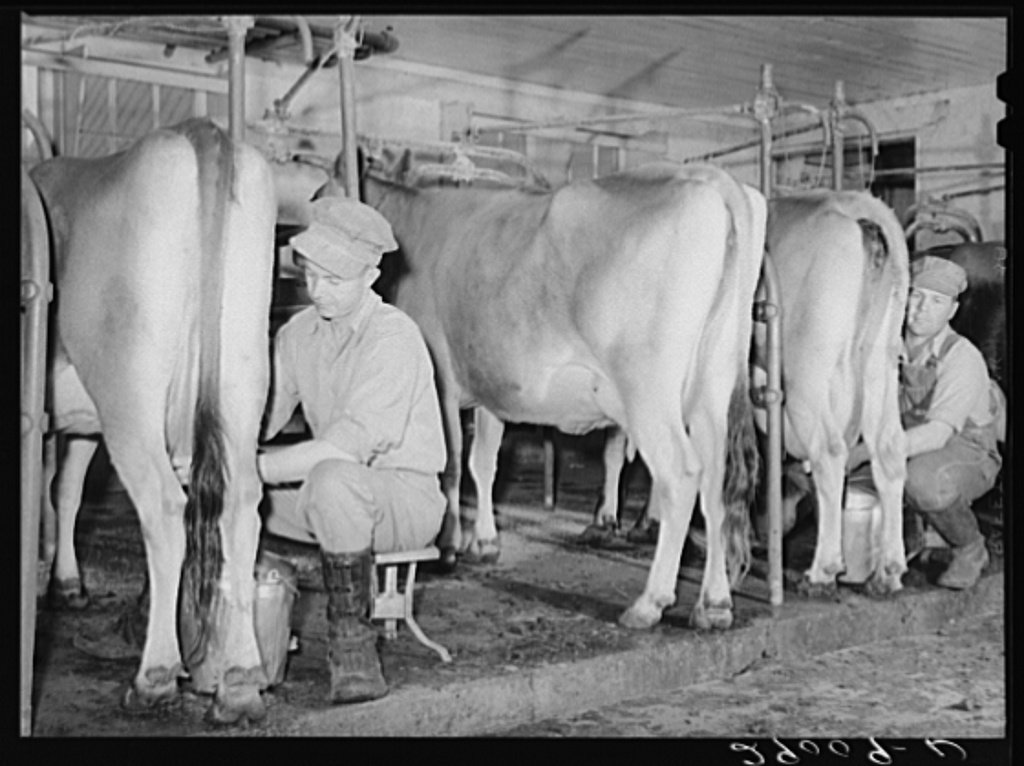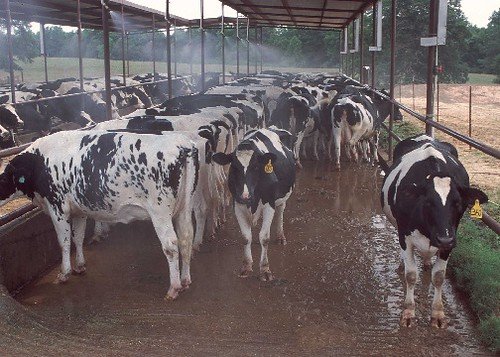For countless new mothers, the journey of breastfeeding brings with it a mixed bag of emotions: joy, bonding, and the overwhelming desire to nourish your little one. However, what happens when this journey encounters a bump in the road, leaving you worried and anxious about your supply of life-giving milk? Fret not, for we are here to delve into the depths of managing low milk supply. In this article, we will uncover a treasure trove of tips and tricks to empower you in overcoming this challenge and nurturing your baby with confidence. So, prepare to embark on a voyage of discovery, as we unveil the secrets to navigating the seas of low milk supply and unlocking the potential to nourish your little one to their heart’s content.
Table of Contents
- Understanding the Causes of Low Milk Supply
- Techniques to Increase Milk Supply Naturally
- Practical Tips for Improving Milk Production
- Supportive Measures to Boost Milk Production
- Seeking Professional Guidance for Managing Low Milk Supply
- Q&A
- In Retrospect

Understanding the Causes of Low Milk Supply
When it comes to breastfeeding, a common concern for many new mothers is low milk supply. Although every woman’s journey is unique, there are several factors that can contribute to this issue. Understanding the potential causes can help identify possible solutions and reassure mothers that they are not alone in facing this challenge.
1. Hormonal Factors: Hormonal imbalances can be a significant contributor to low milk supply. Conditions such as Polycystic Ovary Syndrome (PCOS) or thyroid disorders can affect the production of prolactin, the hormone responsible for milk production. Seeking medical guidance and appropriate treatments can help manage these imbalances and potentially increase milk supply.
2. Insufficient Breast Stimulation: Milk supply is a matter of supply and demand. If the breasts are not adequately stimulated, whether due to infrequent feedings, ineffective latch, or supplementing with formula too soon, it can lead to decreased milk production. Establishing a proper breastfeeding routine, seeking guidance from lactation consultants, and utilizing breast pumps can help stimulate milk production effectively.
3. Stress and Fatigue: It’s no secret that stress and fatigue can impact various aspects of our health, and breastfeeding is no exception. High levels of stress, inadequate rest, and poor nutrition can all contribute to low milk supply. Finding ways to manage stress, ensuring proper rest, and maintaining a healthy diet can aid in promoting milk production.

Techniques to Increase Milk Supply Naturally
The journey of motherhood often comes with challenges and one common concern for breastfeeding mothers is ensuring an adequate milk supply. Luckily, there are various natural techniques that can help increase milk production and ensure your little one gets plenty of nourishment. By incorporating these techniques into your routine, you can boost your milk supply and give your baby the best start in life.
Here are some effective techniques to naturally increase your milk supply:
- Stay Hydrated: Drinking plenty of water throughout the day is essential for maintaining a healthy milk supply. Aim for at least eight glasses of water per day to keep your body hydrated.
- Take Galactagogues: Galactagogues are substances that have been used for centuries to stimulate milk production. Some common examples include fenugreek, blessed thistle, and fennel. Consult with a healthcare professional before incorporating these herbal supplements into your routine.
- Nurse Frequently: The more your baby breastfeeds, the more signals your body receives to produce milk. Aim to nurse your baby on-demand and avoid extending feeding intervals. This constant stimulation will help increase your milk supply.
- Practice Skin-to-Skin Contact: Skin-to-skin contact promotes the release of oxytocin, a hormone that stimulates milk let-down. Spend quality time with your baby by cuddling skin-to-skin, especially during feeding sessions.
- Ensure Proper Latch: A poor latch can impact milk transfer and decrease milk supply. Seek assistance from a lactation consultant to ensure that your baby is properly latching onto the breast, allowing for efficient milk removal.
- Relax and Reduce Stress: Stress can have a negative impact on milk production. Find time for yourself, practice relaxation techniques such as deep breathing or meditation, and surround yourself with a supportive network to relieve stress and promote a healthy milk supply.
Remember, every mother and baby is unique, and it may take some trial and error to find what works best for you. Be patient with yourself and trust your body’s ability to nourish your little one. Utilizing these natural techniques, you can increase your milk supply and create a strong, bonding experience with your baby through breastfeeding.

Practical Tips for Improving Milk Production
Are you looking for ways to boost milk production and enhance the quality of your dairy farm’s output? Here are some practical tips that can help you achieve just that:
- Ensure a Balanced Diet: Providing your cows with a balanced and nutritious diet is essential for optimal milk production. Include a variety of fresh and high-quality forages, grains, and supplements to meet their nutritional requirements.
- Maintain Proper Hygiene: Cleanliness is crucial in promoting healthy cows and higher milk yields. Regularly clean and disinfect the milking equipment, barns, and feeding troughs to minimize the risk of bacterial contamination.
- Implement a Strict Milking Routine: Consistency is key when it comes to milking. Establish a strict milking schedule and ensure that the process is gentle and stress-free for the cows. Remember to clean and sanitize the udders before milking to maintain udder health and prevent infections.
- Monitor and Prevent Mastitis: Mastitis can significantly impact milk production and quality. Regularly check the cows’ udders for signs of inflammation, such as redness, heat, or swelling. Implement proper hygiene and promptly treat any cases of mastitis to minimize its effects on milk production.
- Provide Comfortable Housing: Comfortable and well-ventilated housing plays a significant role in cows’ overall health and milk production. Ensure there is enough space for each cow, proper bedding, and proper temperature control to minimize stress and encourage milk production.
By following these practical tips, you can improve milk production, enhance the quality of your dairy products, and ultimately contribute to the success of your dairy farm. Remember that each cow is unique, so closely monitor their individual needs and make necessary adjustments to optimize their milk production potential.

Supportive Measures to Boost Milk Production
Maintaining a high level of milk production is crucial for dairy farmers to meet the demands of consumers and ensure profitability. To support and boost milk production, there are several measures that can be implemented:
- Implementing proper nutrition: Ensuring cows receive a balanced diet that provides all necessary nutrients is essential. High-quality forage, supplements, and minerals should be provided to optimize milk production.
- Enhancing cow comfort: Comfortable cows are happy cows, and happy cows produce more milk. Providing comfortable bedding, adequate ventilation, and a stress-free environment can significantly impact milk production.
- Regular veterinary care: Regular visits from a veterinarian can help identify and treat any health issues promptly. Preventive measures, vaccinations, and routine health check-ups are essential to maintain cow health and optimize milk production.
- Efficient milking practices: Consistent and efficient milking routines help in maximizing milk production. Proper cleaning and maintenance of milking equipment, as well as skilled personnel, are crucial to ensure optimal milking efficiency.
- Genetic selection: Breeding programs aimed at selecting cows with superior genetics for milk production can be implemented. This can lead to future generations of cows that consistently produce higher volumes of milk.
By implementing these supportive measures, dairy farmers can enhance milk production, improve the overall health and well-being of their cows, and ultimately strive towards a more successful and sustainable dairy farming operation.
Seeking Professional Guidance for Managing Low Milk Supply
As a new mother, it is not uncommon to face challenges with breastfeeding, one of which can be low milk supply. If you find yourself struggling to produce enough breast milk to nourish your baby, seeking professional guidance can make a world of difference. Here are a few reasons why consulting with a lactation specialist or a healthcare professional could be beneficial:
- Personalized Assessment: An expert can assess your unique situation, taking into account factors such as your baby’s latch, milk transfer, and any underlying medical conditions that might be contributing to your low milk supply.
- Knowledge and Advice: A professional’s extensive knowledge on breastfeeding techniques, strategies, and alternative feeding methods can help you better understand the mechanics of milk production and offer practical advice on increasing milk supply.
- Emotional Support: Coping with the frustration and feelings of inadequacy that come with low milk supply can be overwhelming. Professionals can provide emotional support, reassurance, and guidance to help you navigate this challenging journey.
Remember, each breastfeeding experience is different, and not all remedies work for everyone. Seeking the guidance of professionals can help you develop a tailored plan to address your specific needs and increase your milk supply, ensuring both you and your baby thrive on this beautiful bonding journey.
Q&A
How can I increase my milk supply?
The first step is to ensure you have a healthy breastfeeding routine—feed your baby on demand and establish a regular feeding schedule. Additionally, try pumping after breastfeeding sessions to stimulate milk production.
Are there any foods or drinks that can boost milk supply?
Yes, certain foods such as oatmeal, fenugreek, and fennel have been linked to increased milk supply. Additionally, staying hydrated by drinking plenty of water and herbal teas can also help.
Can stress impact milk supply?
Yes, stress can negatively affect milk supply. Finding ways to relax, such as deep breathing or engaging in calming activities, can help boost your milk production.
Is it possible to breastfeed successfully with low milk supply?
Absolutely! While it may be challenging, it is possible to breastfeed with low milk supply. With the help of a lactation consultant and implementing best practices, you can still provide your baby with the benefits of breastfeeding.
Does pumping between feedings increase milk supply?
Yes, pumping between breastfeeding sessions can help to increase milk supply by providing additional stimulation to the breasts. This extra pumping session signals your body to produce more milk.
Can certain medications affect milk supply?
Yes, some medications can impact milk supply. It is essential to consult with your healthcare provider or a lactation specialist before taking any medications while breastfeeding to ensure it won’t interfere with milk production.
Are there any herbal supplements that may help with low milk supply?
Herbal supplements like blessed thistle and alfalfa have been used by some women to increase milk supply. However, it is crucial to seek advice from a healthcare professional before using any supplements to ensure they are safe for you and your baby.
Should I consider using a breast pump to help manage low milk supply?
Yes, a breast pump can be a valuable tool in managing low milk supply. Regular pumping between feedings stimulates milk production and allows you to provide additional milk to your baby when needed. Consulting with a lactation specialist can help you determine the best pumping routine for your situation.
How long does it typically take to increase milk supply?
Everyone’s body is different, but it usually takes about two weeks of consistent breastfeeding, pumping, and proper stimulation to see an increase in milk supply. It’s important to be patient and persistent in implementing the recommended strategies.
Are there any additional resources available for managing low milk supply?
Definitely! There are numerous resources available, such as online forums, lactation consultants, and breastfeeding support groups. These resources can provide guidance, tips, and encouragement to help you manage and overcome low milk supply challenges.
In Retrospect
In conclusion, managing low milk supply can be a challenging journey, but with the right tools and strategies, it’s a hurdle that many mothers have successfully overcome. Remember, every breastfeeding journey is unique, and what works for one might not work for another. Be patient with yourself, and trust that you are doing your best for your little one.
As you navigate through this process, remember to stay hydrated, nourished, and rested. Take the time to care for yourself as a happy and healthy mother will undoubtedly yield a happy and healthy baby. Seek support from your loved ones, join local support groups, and connect with experienced lactation consultants who can provide expert guidance tailored to your specific situation.
Whether you’re utilizing natural remedies such as herbal teas or exploring different breastfeeding positions, never hesitate to experiment and find what brings you and your baby the most comfort and success. Remember, the journey towards managing low milk supply may have ups and downs, but you’re not alone in this expedition.
And finally, always remember that no matter how much or how little milk you’re able to produce, your love and care for your little one will always transcend any quantity. Whether you end up exclusively breastfeeding, supplementing with formula, or finding a combination that works for you, your bond with your baby remains unbreakable.
So take a deep breath, trust in your abilities, and embark on this milk-supply management adventure with an open mind and a heart filled with love. You’ve got this!
As an affiliate, my content may feature links to products I personally use and recommend. By taking action, like subscribing or making a purchase, you’ll be supporting my work and fueling my taco cravings at the same time. Win-win, right?
Want to read more? Check out our Affiliate Disclosure page.